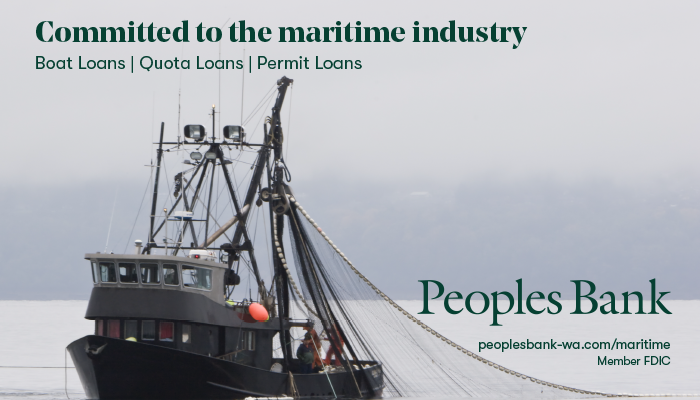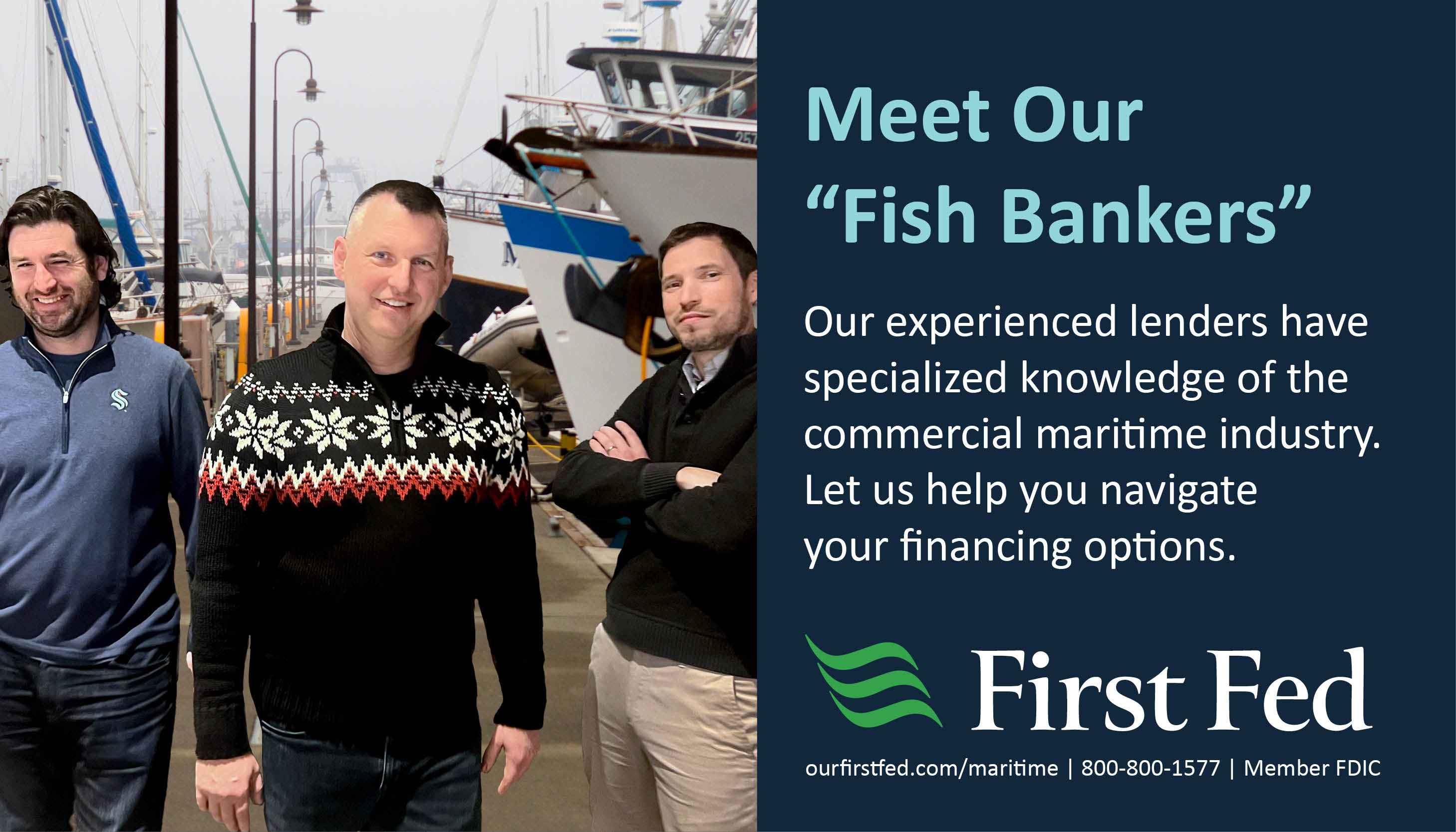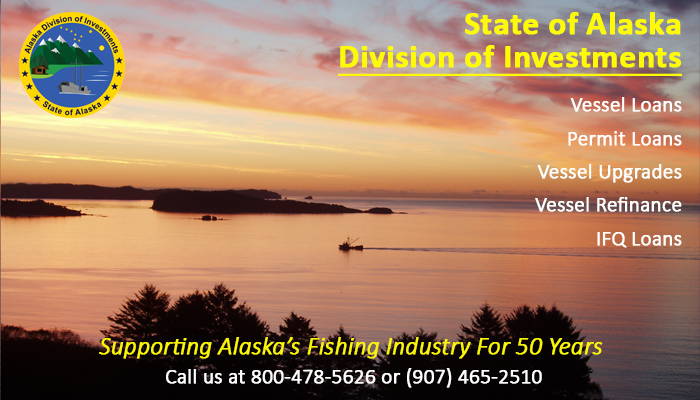Fish Factor by Laine Welch
January 22, 2021
New ocean-related jobs, investments and opportunities will be seeded by an ambitious Blue Pipeline Venture Studio that connects marine business entrepreneurs with the technology, contacts and finances they need to grow.
“The state's blue economy includes anything that takes place on the water, most prominently the seafood industry, along with marine recreation, maritime research, waterborne transportation and much more,” said Garrett Evridge, a well-known fisheries economist previously with the former McDowell Group and new research director for the Venture Studio.
“There is significant opportunity to grow the Alaskan ocean economy,” he added. That might come from refinement of existing industries, getting more value out of salmon, for example, or support for new industries like growing seaweeds, or just being prepared for opportunities that aren't even on the radar. Like what's going to happen in 10, 20 or 30 years. What can we do now to position ourselves for success? We have a lot of challenges and opportunities that we know are headed our way, like climate change and ocean acidification. What's our plan for those? It's part of growing a culture that can embrace change and identify opportunities.”
The nonprofit Venture Studio is the first statewide program of the Bering Sea Fishermen’s Association’s Ocean Cluster that launched in 2017. It is modeled after a venture led by Iceland in 2011 that now includes over 50 clusters around the world.
Last fall, the BSFA received a $600,000 grant from the U.S. Economic Development Administration with matching funds to help jump start ocean businesses and pump $1.2 million into Alaska’s ocean economy. Grant partners include the College of Fisheries and Ocean Sciences at the University of Alaska Fairbanks, Arctic Domain Awareness Center at the University of Alaska Anchorage, Moonbeam Exchange, AKWA-DC, and the Pacific North West Economic Region.
Evridge said many people have great business ideas but they don’t have the time or know where to start. The Venture Studio will serve as a sort of “matchmaker” to connect them with capital, expertise and connections to get off the ground.
“Some of the first things we will do is focus on all of the previous research that is available and then try to identify the roadblocks of why this specific industry has not grown,” he said.
“One reason that I came aboard is the opportunity to focus on what other industries have learned that is applicable to us. The fruit industry, for example, has some pretty strong parallels with seafood processing with the picking and identification and inspection of apples. There are applications in the agriculture realm that are very relevant. But so many entrepreneurs or existing stakeholders don't have the opportunity to focus on those things.”
Evridge said his team, which includes Taylor Holshouser as director of business development, will focus most of this year on developing a robust Venture Studio and building a platform capable of delivering jobs, investment, and opportunities across Alaska.
On a related note, NOAA Fisheries last week announced its “Blue Economy Strategic Plan” that aims to, among other things, “collaborate with partners to support the growth of American business and entrepreneurship that contributes to the development and sustainability of the blue economy across the U.S. that will help accelerate the nation's economic recovery.”
The agency added: “The United States is an ocean nation, and our future prosperity and security depend upon the understanding, health, and sustainable use of our Oceans, Coasts, and Great Lakes.”
NOAA said it intends to expand and strengthen the Blue Economy effort by leading agency-wide initiatives in marine transportation, ocean exploration, seafood competitiveness, tourism and recreation, coastal resilience, aquaculture and developing an American Seafood Campaign, to name but a few.
Plug in to silence and savings - No engine noise…no fuel slicks or emissions -- would an electric boat be suitable for your marine business? Newer battery banks and hybrid options make it ideal for several uses and an Alaska resource can answer all your questions.
“We’re more focused on low speed vessels that know where they are going every day and pretty much have the same routine. Some of the uses would be harbor port operations, work boats, tourism, recreation or rentals. And then, of course, fishing, especially mariculture,” said Bob Varness of Juneau who operates Tongass Rain Electric Cruise LLC and has been doing gas to all-electric or hybrid boat conversions since 2014. “Why wouldn't you want to harvest your product with no oil sheen on the water? It only makes sense to have good clean water when you're pulling in your kelp or oysters or whatever you do. And trollers or gillnetters plugging along at two to three knots - that's an ideal application for electric motors.”
Varness has recently partnered with builders and suppliers to bring more earth-friendly electric vessels to Alaskans.
“We're identifying ideal areas of operation, and then introducing electric boat alternatives to operators and providing them with information and education,” he said. “Then we'll commence with design and identify the description of operation, the budget, the performance and the options to a supplier. At that point, the client, whether it be a fisherman or a tour operator or harbor administrator, can get a good idea if an electric vessel will work for them.”
It is newer and smaller, high energy lithium ion batteries that make it feasible. Studies show they can reduce vessel operating expenses by 75%.
“Some of the other benefits are you have no warmup or idle time, you hop in the boat and push a button and off you go. You have increased reliability, reduced maintenance, and quieter operations which results in less crew and passenger fatigue,” Varness said. “If you don't have access to a plug in for recharging, you can go with a hybrid option and recharge your batteries while you're underway,” Varness said.
There is one hybrid diesel/electric fishing boat in Alaska – the Sunbeam owned by Fabian Grutter who longlines and gillnets out of Sitka. Its diesel engine can charge the 70 kilowatt battery bank with an alternator in four to five hours of cruising “and then you shut the diesel off,” he told the Daily Sitka Sentinel.
Electric boats also are “submarine silent,” Varness added. That could effectively remove the boat sound signatures from internal combustion engines that attract whales to longline hooks loaded with black cod.
“Between an electric motor and some nice black cod traps, the whales wouldn't even know you were coming,” he said with a laugh.
Each vessel is unique and it is not “one size fits all,” Varness said.
“It can be confusing and people may not know where to go,” he added. “And that's our purpose - to help and facilitate with those transitions. If you want us to go ahead, we can put together a nice electric vessel for you based on your operation and your budget and deliver it to you.”
Of note: Washington State is converting its three largest ferries to hybrid drives to reduce greenhouse gas outputs, and there are over 100 battery-operated ferries so far worldwide.
Seafood without the sea - San Diego startup BlueNalu, which is growing fish fillets directly from fish cells, has raised $60 million in financing to build a pilot factory and launch its seafood in restaurants. The three year old company plans to grow up to eight species of seafood, with mahi-mahi and bluefin tuna as its first products. Depending on federal approval, BlueNalu could roll out its first lab grown fish this year.
Oily plastics - The Break Free from Plastic Pollution Act of 2020 would, among other things, hold corporations accountable for wasteful products, phase out single use plastics, reduce wasteful packaging and reform the nation’s waste and recycling systems.
Today, 14% of oil and 8% of gas is used to make petrochemicals, the feedstock of plastics. The International Energy Agency predicts that within 30 years, 50% of the growth in oil demand will be related to petrochemicals.
That means we are extracting fossil fuels, not for energy, but for things like plastic soda bottles that we use once.
Find more at www.alaskafishradio.com






